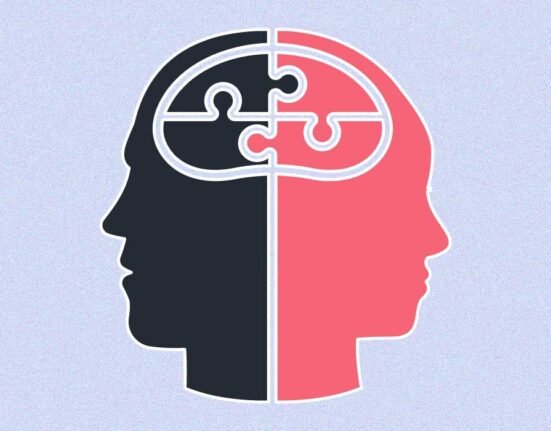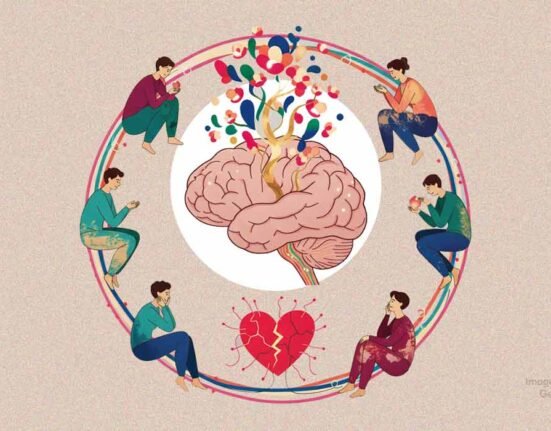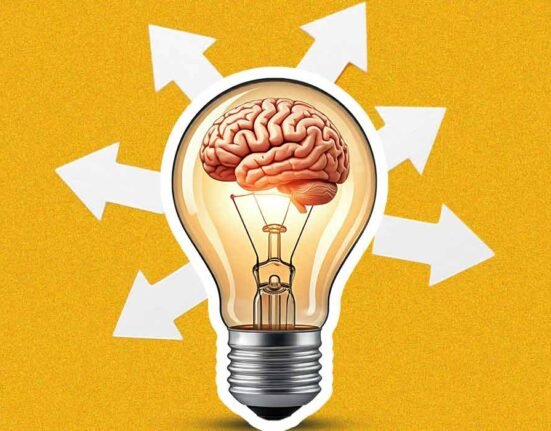Ludwig Wittgenstein (1922), a well-renowned philosopher, once said, “The limits of my language mean the limits of the world.” This simple yet profound quote represents a compelling notion of how language influences individuals’ experiences of the world. Language is more than just words and sounds with meaning. It is a framework to organise our thoughts, shaping how we perceive the world (Hussein, 2012). This begs the question: since language has the power to shape the way one thinks, can it also influence the way someone feels? Several studies and research are centred around this question to identify the many ways in which language and emotions are connected.
Read More: The Multilingual Brain: How Indian Children Juggle Multiple Languages and Scripts
Theoretical Perspectives of Language and Emotions
A growing body of psychological research indicates that language is essential not only for expressing our emotions but also in how we construct, differentiate, and regulate them. Many theories with a psychological foundation suggest that emotions are more than involuntary physiological responses from the body, but rather, emotions are shaped by our thoughts and the way we understand, experience, and perceive the world, with language playing a key role in these processes.
Read More: How to learn a new Language and what are its benefits
Conceptual Act Theory (CAT)
Proposed by Lisa Feldman Barrett, the Conceptual Act Theory (CAT) states that emotions are constructed in the moment using two key elements: sensations that can be interoceptive or exteroceptive, and conceptual knowledge of emotions. A study by Lindquist et al. (2015) connected CAT with language, as it provides conceptual categories (e.g., anger, fear, disgust) that act as tools to create meaning of the sensations in a certain context.
The significance of such categories is shown by experimental research that asked individuals to identify and describe emotions in facial expressions without using emotion words like anger, fear, disgust, etc. Participants found it difficult to distinguish the expressions and described all faces as simply unpleasant. This highlights the importance of emotional categories that language provides, as it helps to express and perceive emotions in ourselves and others.
In addition to conceptual categories, language helps us understand the context of certain emotions. For instance, the word fear has different meanings based on the situation. There is a difference between fear of a haunted house and fear of an exam. CAT belongs to a broader theory known as psychological constructionism, which states that emotions are products of essential mental functions such as memory, attention, and language. Without words to identify and organise our thoughts and feelings, emotions may remain vague and difficult to understand (Lindquist et al., 2015).
Read More: How language can be used to dominate others and how to protect yourself from it
Emotional Granularity
The ability to distinguish similar emotions, such as being aware of when you are frustrated, which is different from being overwhelmed, is called emotional granularity. This ability is linked to better emotional regulation and mental well-being. Language helps people define and differentiate their emotions more clearly by giving them terminology and labels.
An experimental study showed that individuals who described varied daily experiences tend to have more detailed, distinct, and specific emotional responses, especially to negative events (Hoemann et al., 2023). It indicates that language can not only help in defining emotions but also aids in better emotional comprehension and mental health.
Affect Labelling
Research demonstrates that when assigned labels, emotions can alter an individual’s experience as well as their physiological reactions. This is shown by an experiment where a few subjects were informed about words eliciting fear, and the remaining participants were primed with words provoking anger and frustration. These participants were then asked to listen to unpleasant music. Following that, researchers found that the subjects primed with the word fear were involved in more risk-avoidant behaviours than the group primed with anger-words, indicating that the labelling modified their emotional tendency.
In another study, subjects in the first group were asked to label emotions they felt during stressful tasks, and another group was asked not to label emotions but simply perform the task. The first group exhibited calming cardiac patterns than the group that did not label. This was further proven by brain imaging, which demonstrated that labelling emotions decreases the activity of the amygdala, thereby cooling down an emotionally stressful situation (Lindquist et al., 2015).
Read More: The Psychology Behind Labelling and Stigma
The Significant Impact of Language on Emotional Memory
Language not only shapes how we express emotions in the present, but also how we remember emotional memories from the past. Emotional memories are recalled, frequently through narrating the memory and describing what occurred, how it felt, and why it mattered. This recollection is not just reflective; rather, this narration can change the emotional meaning of the memory itself.
For example, in an experiment by (Nook et al.2020), participants were shown emotional facial expressions and were asked to create stories for why the person might be feeling that way. Later, when asked to recollect the features of those faces, the participants recalled and described the emotions as more intense than they originally were. These findings show how language, through recollection and narration, can shape our memory.
Read More: Psychology Behind Effective Learning
Emotional Regulation of Multilingual Individuals
In the case of bilingual and multilingual individuals, language may determine the way emotional memories are remembered and how they are processed. Researchers suggest that recalling and narrating a memory in a second language can reduce the emotional intensity of the memory, as a second language is less connected with emotional learning at early life stages when compared to an individual’s native language. This is commonly seen when individuals explain distressing events; they might speak in their second language to feel a sense of emotional detachment and to reflect on the matter objectively.
Bilinguals alternate between the languages to control the intensity of feelings. Studies indicate that individuals tend to talk in their first language when they want to convey more emphatic and personal feelings, including anger, genuine happiness, and feelings of dejection, and in the second language when they wish to moderate emotional reactions. This tendency indicates that language is related to different emotional situations over time (Williams et al., 2019).
The Role of Language in Mental Health and Therapy
Language is significantly essential in therapy. Clients often prefer therapists who communicate in their preferred language, as it helps build a good rapport, which can create a sense of connection and familiarity for the client. This comfort can help clients engage in difficult and sensitive conversations. Therapy sessions can be difficult when individuals belong to different languages or cultures.
Furthermore, some clients may not use or even have precise words in their culture to explain an emotion. It can be challenging for the therapists to articulate what the client feels. Therapists should be sensitive to such differences and provide enough time for the client to find the words to express their feelings. This cultural and linguistic sensitivity ensures the comfort and safety of the clients and can help them feel understood and heard (Verkerk et al., 2021).
Read More: Language Parallels Between Hate Speech and Mental Disorder Forums
Conclusion
Language plays a significant role in both thought and emotions. From providing emotional categories through Conceptual Act Theory (CAT) to influencing emotional memory, language is deeply involved in how we understand and perceive the emotional worldview. Additionally, research highlighted the importance of labelling emotions, which can influence behaviour, reduce mental distress, and shape memories.
The article also focused on multilingualism and how individuals often switch their languages depending on the emotional intensity. Lastly, within therapy, language enables trust and connection when the therapist and client interact in the client’s language. Ultimately, language is not just a tool for communication; it is the foundation for how emotions are experienced and understood.
FAQs
1. Can language change how we feel about something?
Yes, language can change how we feel about something. The words we use, including their grammar and sentence structures of a language, can shape our emotional responses. For instance, if an individual caused an accident, the English language frames sentences that place the responsibility on the speaker, whereas in Spanish, the emphasis is more on the accident occurring rather than the person.
2. Do different languages have different emotional vocabularies?
Yes, different languages can have different emotional vocabularies. Words that explain a certain emotion may be present in one language but not in another. For instance, Vietnamese speakers use the word Ngai to express complex feelings of guilt or shame when asking someone for help—an emotion that English cannot directly capture in a single word.
3. Does learning a new language change how we experience emotions?
Yes, learning a new language could potentially change how we experience emotions. The new language might have a more complex vocabulary that can help explain various emotional reactions and situations. Additionally, speakers can use both old and new languages to regulate emotional narratives based on their intensity.
4. Can we use language to manipulate emotions?
Yes, language can manipulate emotions. For instance, in certain sensitive situations like death or divorce, specific words and sentences may trigger a more intense emotional response, whereas carefully chosen words can evoke a calmer response.
5. Does the grammar of a language influence emotion?
Grammatical structures, including tenses and pronouns, can create various sentence structures that influence different emotional responses.
References +
Hoemann, K., Lee, Y., Kuppens, P., Gendron, M., & Boyd, R. L. (2023). Emotional Granularity is Associated with Daily Experiential Diversity. Affective Science, 4(2), 291–306. https://doi.org/10.1007/s42761-023-00185-2
Hussein, B. A. S. (2012). The Sapir-Whorf Hypothesis Today. Theory and Practice in Language Studies, 2(3), 642–646. https://doi.org/10.4304/tpls.2.3.642-646
Lindquist, K. A. (2015). The role of language in emotion: predictions from psychological constructionism. Frontiers in Psychology, 6(444). https://doi.org/10.3389/fpsyg.2015.00444
Nook, E. C., Satpute, A. B., & Cakar, M. E. (2020). The Role of Language in the Construction of Emotion and Memory. Neuroscience of Enduring Change, 4(1), 56–88. https://doi.org/10.1093/oso/9780190881511.003.0004
Satpute, A. B., Lindquist, K. A., & Gendron, M. (2015). Does Language Do More Than Communicate Emotion? Current Directions in Psychological Science, 24(2), 99–108. https://doi.org/10.1177/0963721414553440
Verkerk, L., Backus, A., Faro, L., Dewaele, J.-M., & Das, E. (2021). Language Choice in Psychotherapy of Multilingual Clients. Language and Psychoanalysis, 10(2), 1–22. https://doi.org/10.7565/landp.v10i2.5542
Williams, A., Srinivasan, M., Liu, C., Lee, P., & Zhou, Q. (2019). Why do bilinguals code-switch when emotional? Insights from immigrant parent–child interactions. Emotion, 20(5). https://doi.org/10.1037/emo0000568
Wittgenstein, L. (1922). Tractatus Logico-Philosophicus (C. K. Ogden, Trans.). Routledge & Kegan Paul. (Original work published 1921)













Leave feedback about this